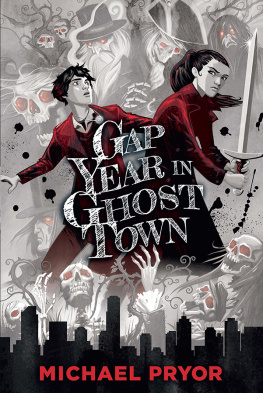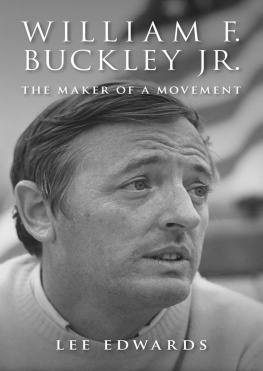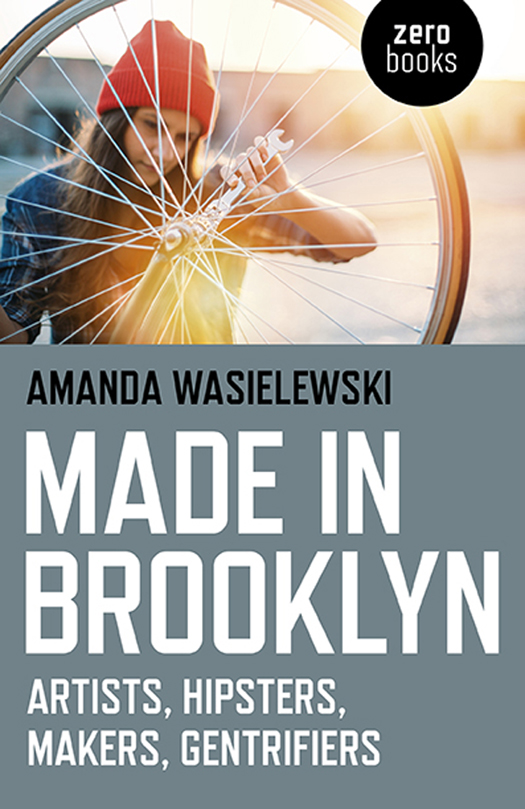
First published by Zero Books, 2018
Zero Books is an imprint of John Hunt Publishing Ltd., No. 3 East Street,
Alresford, Hampshire SO24 9EE, UK
www.johnhuntpublishing.com
www.zero-books.net
For distributor details and how to order please visit the Ordering section on our website.
Text copyright: Amanda Wasielewski 2017
ISBN: 978 1 78535 658 2
978 1 78535 659 9 (ebook)
Library of Congress Control Number: 2017930559
All rights reserved. Except for brief quotations in critical articles or reviews, no part of this book may be reproduced in any manner without prior written permission from the publishers.
The rights of Amanda Wasielewski as author have been asserted in accordance with the Copyright, Designs and Patents Act 1988.
A CIP catalogue record for this book is available from the British Library.
Design: Stuart Davies
Printed and bound by CPI Group (UK) Ltd, Croydon, CR0 4YY, UK
We operate a distinctive and ethical publishing philosophy in all areas of our business, from our global network of authors to production and worldwide distribution.
About Amanda Wasielewski
Amanda Wasielewski is a Lecturer in Media Studies at the University of Amsterdam in the Netherlands. She has previously taught Modern Art History and Architectural History at Lehman College and City College of New York and is a practicing artist whose work has been exhibited internationally. She currently lives in Stockholm and Amsterdam.
Acknowledgements
I would first and foremost like to thank Prof. Marta Gutman for her mentorship and support throughout my research for this book. Her encouragement and enthusiasm were invaluable. I would also like to thank the Bushwick arts pioneers who agreed to be interviewed, including Thomas Burr Dodd and Kevin Lindamood. Thanks, as well, to Igal Nassima and Jo-Anne Hyun of 319 Scholes who invited me to work in their co-working space, which gave me firsthand experience of maker culture in Morgantown. I would like to thank my doctoral advisor Prof. David Joselit for his continued support of my research. Special thanks to my family and Katie Sullivan for their support, and to Chelsea Haines, Leila Harris, Jenny Sarathy, and Johanna Sluiter for their time in the trenches with me. Finally, thank you to Agri Ismail for going above and beyond the call of duty and being my best and most dedicated editor and supporter.
For Agri Ismail
Introduction
On New Years Eve 2008, I visited the industrial hinterland around the Morgan Avenue subway station in Brooklyn for the first time. I ended up there totally by chance after a last-minute change of plans: an art school friend from London, where I was living at the time, also happened to be in New York and invited me along to a friends warehouse party that night. Sandwiched between the Brooklyn neighborhoods of Williamsburg and Bushwick (and usually included in the latter), this tract of hulking industrial property, cracked pavements, and creative types had already become a playground for hipsters and artists by the time I showed up there, although it appeared wholly desolate to me at the time the only sign of life I detected was a lone kebab shop on Bogart Street. Many of the other establishments in the area, I learned later, were well-disguised within their surroundings. Throughout the night, my friends and I were ushered through a series of former industrial buildings with warren-like mazes of makeshift rooms and lofted beds, each creating their own little version of bohemian utopia.
As a tourist, I was somewhat oblivious to my geographic location at the time, not realizing where I had been until four years later when, while planning a move to New York, this already-infamous artist neighborhood popped up on my radar. In May 2012, Hrag Vartanian, the founder of Bushwick-centric art blog Hyperallergic, indicated that Bushwick was, by that point, somewhat past its trend-setting prime in an article titled, Is Ridgewood Breaking Away from the Bushwick Scene?(a nickname for the area around the Morgan Avenue subway) in 2012. I was, of course, decidedly late to the party.
Located on the far northeastern edge of Brooklyn and not exactly commuter-friendly, Bushwick must have seemed like an unlikely candidate for a real estate bonanza just a decade before. When I moved to the area, many of the three-story brick row houses had crumbling moldings and collapsing front steps, and the distinctive wood-frame buildings of the area, coated with vinyl siding and ringed with chain-linked fences, remained rundown. Despite its persistently gritty aesthetic, many of the neighborhoods crowded, dimly-lit bodegas and the auto repair shops had recently been replaced by a smattering of yoga studios, bars, health food shops, and newly-built luxury apartment buildings with underground parking garages. The streets were still littered with broken glass in many places and there were quite a few remaining industrial operations, but the professional graffiti murals dotting the shopfronts, replacing informal graffiti, marked the neighborhoods transitional period. Young artists, who had been in the area for only about a decade, were increasingly finding it hard to cope with higher rents.
In the 1970s and 80s, Bushwick was primarily an African-American and Latino neighborhood that had faced economic downturn in the wake of deindustrialization. Before artists began moving into the industrial warehouse space just north of Bushwick around 1999, the neighborhood was perhaps best known for riots during the July 1977 blackout and, before that, as an industrial hub and beer-brewing center. The artists who came after, many of whom were priced out of Williamsburg in the late 90s and early 00s, formed a new artist enclave there, perhaps hoping it was far enough from Manhattan to avoid the kind of gentrification that Williamsburg had seen. The allure of a creative community, however, outweighed geographic distance and, soon, Bushwick was the new cool neighborhood that 20-somethings flocked to.
Powhidas proposal to avoid displacement of the artistic community, outlined in a document titled The Yellow Building, suggested collectively purchasing a building in the area and using it as a co-operative studio space. He argued that this solution, poses a stewardship model based on collective need within the capitalist market system. Private property and ownership are not abolished, but the terms are modified to provide a way around the decision making of an individual owner or developer.weary of the constantly shifting urban landscape and deeply cynical in the process. Idealism and issues of social justice have been increasingly pushed to one side, weighed down by the inevitability of speculation in the real estate market and the struggle to survive neighborhood change.
The Bushwick creative scene first began in the industrial area of Morgantown, officially called the East Williamsburg In-Place Industrial Park (EWIPIP), and spread southward through the neighborhood. The EWIPIP is roughly bounded by the Brooklyn-Queens Expressway to the north, Flushing Avenue to the south, Newtown Creek to the east and Bushwick Avenue to the west. Though the area had been home to a mix of light and heavy manufacturing facilities since the 19th century, artists did not move there until the late 1990s when many of them migrated from neighboring Williamsburg, where prices were rapidly rising on similar property. The newly colonized subsection of the EWIPIP around the Morgan Avenue subway station was later nicknamed Morgantown, a name that some residents associate with property development and gentrification. I refer to this neighborhood as Morgantown precisely because of its connotations of capitalist growth and investment, which are, in many ways, the founding principles of anchoring institutions in the neighborhood. I also use it as a way to separate the development of the industrial part of Bushwick from the largely residential character of the neighborhood south of Flushing Avenue. This smaller zone of the EWIPIP is, according to my estimation, bordered by Grand Street to the north, Flushing Avenue to the south, Stewart Avenue to the east and Bushwick Avenue to the west. The main concentration of activity in the area centers around the stretch of Bogart Street near the second entrance to the Morgan Avenue subway, where I first emerged into this undercover bohemia in 2008.









